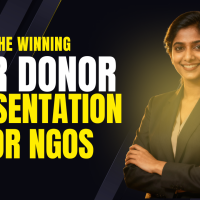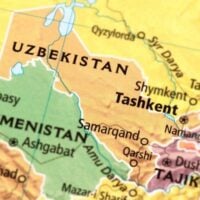Deadline: 15-Jun-22
The European Commission (EC) is calling for proposals for Human Rights and Democracy Thematic Programme in Laos.
European Union’s (EU) external action, in line with the 2030 agenda and the European Consensus on development . The thematic programme on Human Rights and Democracy (HR&D) established under Regulation (EU) builds upon the key features of the European Instrument for Democracy and Human Rights (EIDHR) as a major flagship tool.
Objectives
- The global objective of this call for proposals is: to contribute to the respect for fundamental rights and the consolidation of the rule of law in the Lao PDR
- The specific objective of this call for proposals is: to strengthen the capacities of Lao media practitioners and local civil society actors in promoting accountability and transparency at national and local levels in the area of green growth and sustainable development, including through the use of digital and new technologies.
Priorities
The priorities of this call for proposals are:
- Support privately and state-owned media outlets (including women journalists) to strengthen their professional skills and use of digital and new technologies, with the view of providing the public,
- with quality information through responsible and professional reporting with regard to green development issues;
- Support civil society actors (including Lao CSOs and citizen-journalists like bloggers, filmmakers and Youtubers) to enhance their knowledge and capacity to contribute constructively to policy-making, monitoring, and advocacy about ‘green development issues’ impacting their communities, including through the use of digital and new technologies.
Funding Information
- The overall indicative amount made available under this call for proposals is EUR 1,000,000.
- Any grant requested under this call for proposals must not exceed the below maximum amount:
- maximum amount: EUR 1,000,000.00
- Any grant requested under this call for proposals must not exceed the below maximum percentage of total eligible costs of the action:
- Maximum percentage: 90 % of the total eligible costs of the action.
Eligibility Criteria
- Lead applicant
- In order to be eligible for a grant, the lead applicant must:
- be a legal person
- be non-profit-making
- be a specific type of organisation such as: non-governmental organisation, public sector operator, local authority, international (inter-governmental) organisation
- be established in a Member State of the European Union or in the Lao PDR
- be directly responsible for the preparation and management of the action with the co-applicant(s) and affiliated entity(ies), not acting as an intermediary
- be able to act and coordinate with the co-applicant(s) and affiliated entity(ies).
- In order to be eligible for a grant, the lead applicant must:
- Co-applicant(s)
- Co-applicants participate in designing and implementing the action, and the costs they incur are eligible in the same way as those incurred by the lead applicant.
- Co-applicants must satisfy the eligibility criteria as applicable to the lead applicant himself.
- Co-applicants must sign the mandate.
- If awarded the grant contract, the co-applicant(s) (if any) will become beneficiary(ies) in the action (together with the coordinator).
- Affiliated entities
- The lead applicant and its co-applicant(s) may act with affiliated entity(ies).
- Only the following entities may be considered as affiliated entities to the lead applicant and/or to co-applicant(s):
- Only entities having a structural link with the applicants (i.e. the lead applicant or a co-applicant), in particular a legal or capital link.
- This structural link encompasses mainly two notions:
- Control, consolidated financial statements and related reports of certain types of undertakings:
- Entities affiliated to an applicant may hence be:
- Entities directly or indirectly controlled by the applicant (daughter companies or first-tier subsidiaries). They may also be entities controlled by an entity controlled by the applicant (granddaughter companies or second-tier subsidiaries) and the same applies to further tiers of control;
- Entities directly or indirectly controlling the applicant (parent companies). Likewise, they may be entities controlling an entity controlling the applicant;
- Entities under the same direct or indirect control as the applicant (sister companies).
- Entities affiliated to an applicant may hence be:
- Membership, i.e. the applicant is legally defined as a e.g. network, federation, association in which the proposed affiliated entities also participate or the applicant participates in the same entity (e.g. network, federation, association,…) as the proposed affiliated entities.
For more information, visit https://bit.ly/3IcqXJQ









































